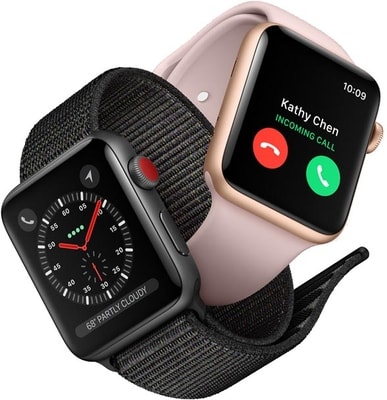
You’re all aware that Apple has created a new Apple Watch, that supports LTE. And you’re all probably thinking that it will enable you to access the internet at LTE speeds, when you’re not connected to your iPhone. Right? A few days ago, however, we found out that T-Mobile had placed some “restrictions” around what that coverage looks like. Those restrictions are that you can only reach 3G speeds. More specifically 512Kbps. Which feels like we have taken a step back in time, if I’m being honest. I guess the reason I’m saying that is because it’s 2017, and the goal shouldn’t be these speeds. Further to that, Apple made a watch that supports LTE, so why aim so incredibly low, T-Mobile?
The issue is tied to T-Mobile’s restrictions on its plan option, including the T-Mobile ONE plan, which restricts wearable devices (and tethering devices) to only 512Kbps. And while it’s certainly not LTE speeds, especially not on T-Mobile’s speedy network, it’s also worth pointing out that many people won’t be doing the data-heavy things they would be doing on their smartphone where an LTE connection would necessarily be wanted, or even required. But if Apple advertises LTE, then let’s get LTE, folks.
T-Mobile heard this loud and clear and CEO, John Legere had this to say:
“The Apple Watch Series 3 Plan on @TMobile will be $10/m for unlimited 4G LTE. Thanks for your feedback. We always listen and act! #uncarrier”
Which definitely changes this quite a bit. I guess my concern with this was that Apple says LTE, so that’s what you expect. I suppose Apple can’t tell these carriers what to do? Or maybe they can. Presumably Apple worked with these carriers to the extent that they understood what capabilities they had, so I’m not sure why T-Mobile would start out so low. They do say that it has to do with the kind of data that they provide for wearables, but come on. You knew this was coming. So act accordingly. If I can get better coverage from another carrier, and pay the same, of course I’m going to go with that carrier. Which makes it feel like T-Mobile is trying to deter business.

For those of you who aren’t familiar with the difference between 3G and LTE, I will tell you. 3G was the first technology with sufficient speed to provide a decent user experience on a smartphone. That’s right, I said decent. Obviously 4G came afterwards, but this technology still isn’t available everywhere. Some cellular providers are still building out their 4G network. In theory 4G is much faster, but there are different versions of 4G. Basically, there is 4G and 4G LTE.
Many people consider LTE to be true 4G technology. Generally, if a cellular provider describes a 4G network without mentioning LTE, they are probably talking about a High Speed Packet Access (HSPA) network. The HSPA network is a faster version of the 3G network. While not as fast as an LTE network, it is still faster than a 3G network. Since LTE is still relatively new, the cellular providers haven’t fully built out their LTE networks yet. Be careful when looking at the network coverage maps on the providers’ websites. Some companies claim to have broad nationwide 4G coverage. They may really be talking about HSPA coverage and not LTE coverage.
I apologize if that’s confusing, but the bottom line is that there is a difference. Which is why its kind of odd that T-Mobile didn’t offer the faster speed to their customers from the get go. The good news is, they now do. So if you were worried about the type of coverage you will have, don’t be. You will be able to get LTE, but only where the network allows it.
